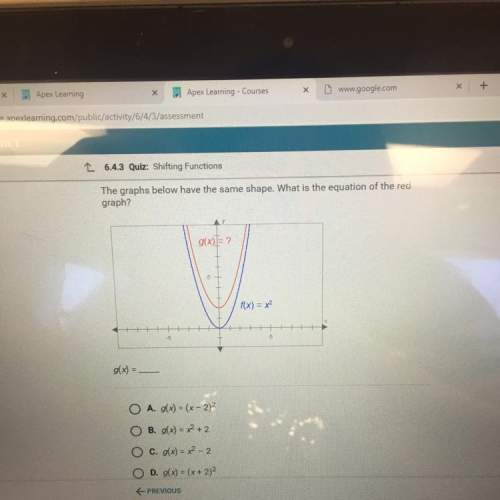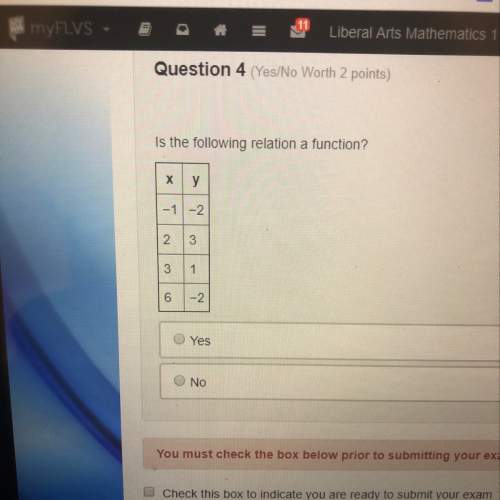
Mathematics, 11.03.2020 23:46 webbhlharryteach
The diagram below models the layout at a carnival where G, R, P, C, B, and E are various locations on the grounds. GRPC is a parallelogram.
Parallelogram GRPC with point B between C and P forming triangle GCB where GC equals 400 ft, CB equals 350 ft, and GB equals 450 ft, point E is outside parallelogram and segments BE and PE form triangle BPE where BP equals 250 ft.
Part A: Identify a pair of similar triangles. (2 points)
Part B: Explain how you know the triangles from Part A are similar. (4 points)
Part C: Find the distance from B to E and from P to E. Show your work. (4 points)

Answers: 1


Another question on Mathematics

Mathematics, 21.06.2019 14:30
Describe in detail how you would construct a 95% confidence interval for a set of 30 data points whose mean is 20 and population standard deviation is 3. be sure to show that you know the formula and how to plug into it. also, clearly state the margin of error.
Answers: 3

Mathematics, 21.06.2019 15:20
Asmall (but heavy) particle placed in a glass of water will follow a zigzag motion because the particle will bounce off of the water molecules it meets. this is called brownian motion. a physicist simulates this on a computer, by varying the distance a particle can travel (called the mean free length), on average, before it collides with a water molecule and assigning the change in motion to be one of 8 directions, each with a similar probability. by running the simulated particle (with the same mean free length) many times she determines that it should take 15 seconds, on average, for the particle to fall to the bottom, with a standard deviation of 1.5 seconds. next she lets a real particle fall through a glass of water and finds that it took 18 seconds. what does she conclude, and why?
Answers: 1

Mathematics, 21.06.2019 19:20
The fraction of defective integrated circuits produced in a photolithography process is being studied. a random sample of 300 circuits is tested, revealing 17 defectives. (a) calculate a 95% two-sided confidence interval on the fraction of defective circuits produced by this particular tool. round the answers to 4 decimal places. less-than-or-equal-to p less-than-or-equal-to (b) calculate a 95% upper confidence bound on the fraction of defective circuits. round the answer to 4 decimal places. p less-than-or-equal-to
Answers: 3

Mathematics, 22.06.2019 00:50
F. a fair coin is thrown in the air four times. if the coin lands with the head up on the first three tosses, what is the probability that the coin will land with the head up on the fourth toss? a. 0 b. 1/16 c. 1/8 d. 1/2
Answers: 2
You know the right answer?
The diagram below models the layout at a carnival where G, R, P, C, B, and E are various locations o...
Questions

Biology, 01.06.2020 10:57

Biology, 01.06.2020 10:57

Social Studies, 01.06.2020 10:57




Mathematics, 01.06.2020 10:57

English, 01.06.2020 10:57

Mathematics, 01.06.2020 10:57

History, 01.06.2020 10:57

Biology, 01.06.2020 10:57

Spanish, 01.06.2020 10:57




Mathematics, 01.06.2020 10:57

Mathematics, 01.06.2020 10:57

English, 01.06.2020 10:57

English, 01.06.2020 10:57

Mathematics, 01.06.2020 10:57





